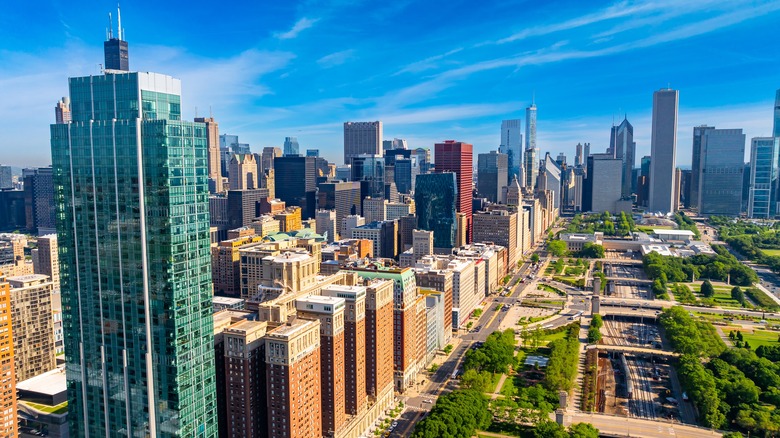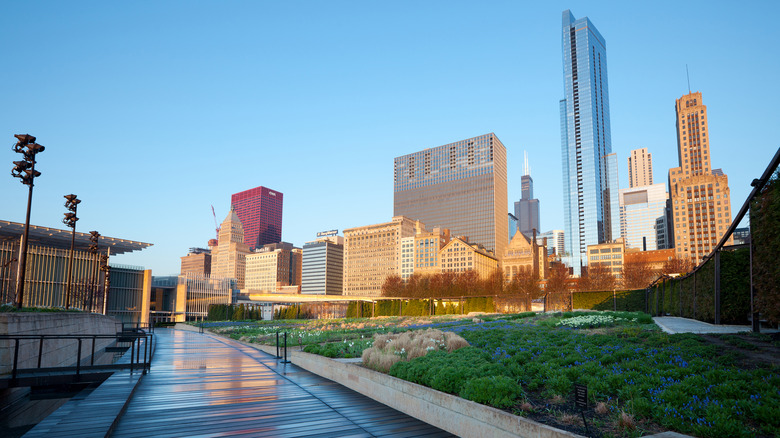Chicago's 'Green Rooftop Revolution' Has Turned Skyscrapers Into Garden Spots
When most people picture Chicago, their minds conjure up visions of a sprawling urban landscape — iconic skyscrapers piercing the sky, architectural marvels lining the streets, and the shimmering expanse of Lake Michigan glinting under the Midwestern sun. But beyond its reputation as a concrete jungle, Chicago harbors a lush, verdant secret: It is one of the greenest cities in the United States, boasting over 500 vegetated rooftops and more than 5 million square feet of green roof coverage.
These green rooftops, which are engineered layers of soil planted with drought-tolerant vegetation atop urban buildings, do much more than beautify the city skyline. They play a crucial role in sustainability by improving water quality, managing stormwater, and reducing urban heat. In a city like Chicago, where spring showers often turn streets into waterways, green roofs act as natural sponges, slowly releasing infiltrated rainfall while transforming the skyline into a vibrant patchwork of gardens. The environmental benefits don't stop there; these oases also enhance air quality, conserve energy, and invite biodiversity to thrive in the heart of the metropolis.
Chicago's green rooftop revolution began in 1993 with the CitySpace Plan, an ambitious initiative to carve out more open, natural spaces in an ever-expanding urban grid. By 2004, the city doubled down with its Sustainable Development Policy, requiring private developers receiving municipal assistance to incorporate eco-friendly elements into their projects. Once heralded as "America's greenest city," with nearly 70% of its space green-certified, Chicago continues to push boundaries, cultivating natural diversity for its residents while redefining what an urban environment can be. While the city's commitment to sustainability offers a refreshing take on urban living, it's worth noting some tourist traps in Chicago to avoid as you plan your visit.
Visit these green rooftop spaces in Chicago
When visiting Chicago, escaping the city's iconic concrete skyline is surprisingly easy, thanks to its abundance of green rooftop spaces open to the public. Perhaps the most impressive example, though not immediately obvious, is Millennium Park. Spanning over 24 lush acres, it's one of the largest green roofs in the world, built atop a railroad yard and several parking garages. If you're eager to combine education with greenery, the Chicago Botanic Garden's 16,000-square-foot rooftop garden serves as a living classroom where visitors can explore an array of native and exotic plants. For an even broader green escape, explore the Lincoln Park neighborhood.
Foodies and sustainability enthusiasts will be drawn to Chicago's thriving rooftop farms, which redefine farm-to-table concepts. The standout McCormick Place Rooftop Farm, the largest of its kind in the Midwest, spans an impressive 30,000 square feet. It's home to a microgreens operation, multiple honeybee colonies, and vermicompost bins — all contributing to its mission of sustainable food production. Even Soldier Field gets in on the action with a rooftop garden atop its parking garage, offering Chicagoans 17 acres of green space complete with a children's garden and even a winter sledding hill.
Visitors keen to dive deeper into green design and sustainability must pay a visit to the Peggy Notebaert Nature Museum. Featuring five distinct green roofs, this museum offers an interactive educational experience, showcasing how these innovative spaces benefit urban environments. Chicago's green rooftop revolution isn't just about creating beautiful spaces — it's about reimagining urban living. These elevated gardens, farms, and educational spaces provide residents and visitors alike with a unique perspective on how nature can thrive amid a bustling city. Before planning your trip, take some time to familiarize yourself with the unwritten rules of visiting the Windy City.

